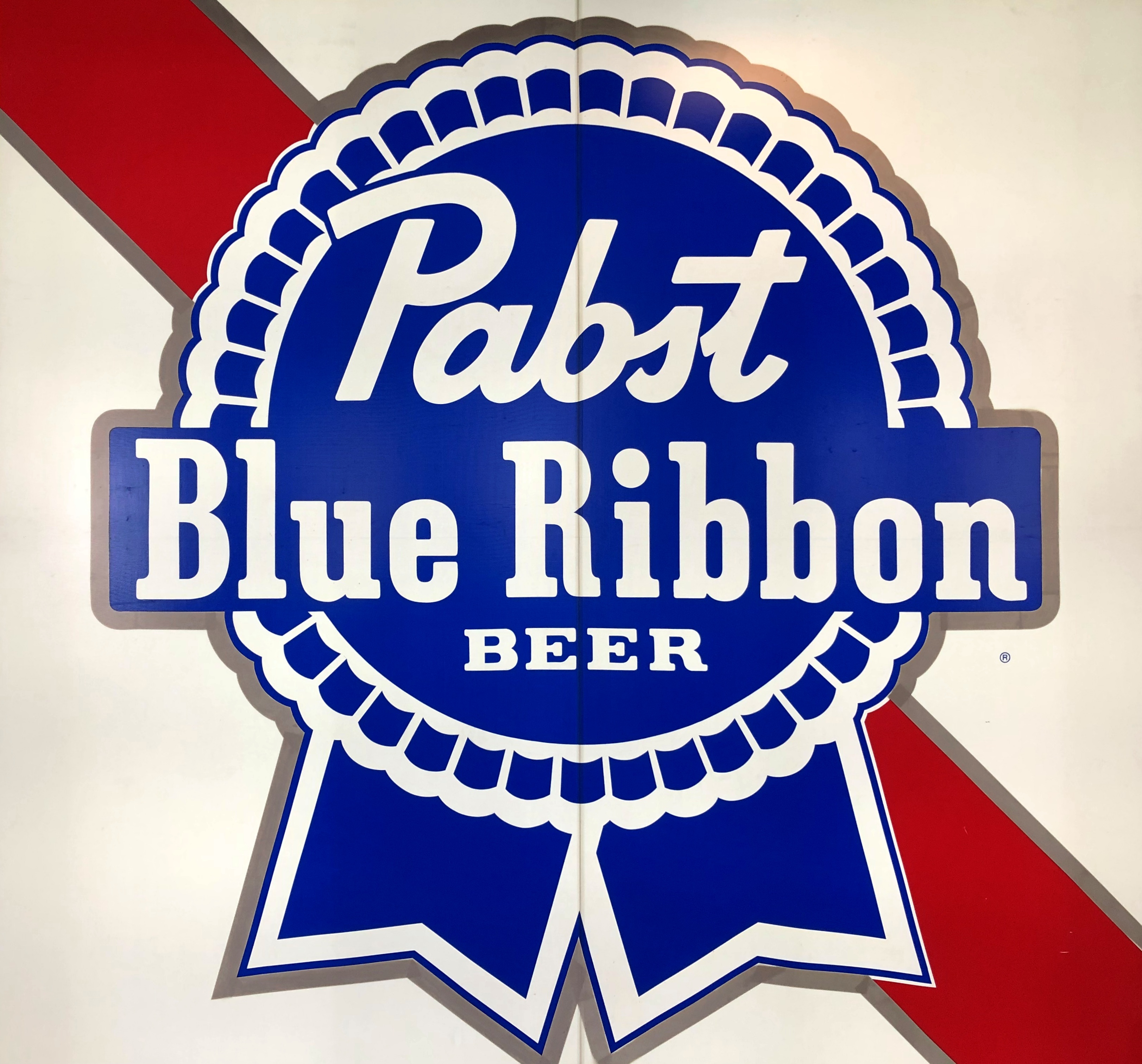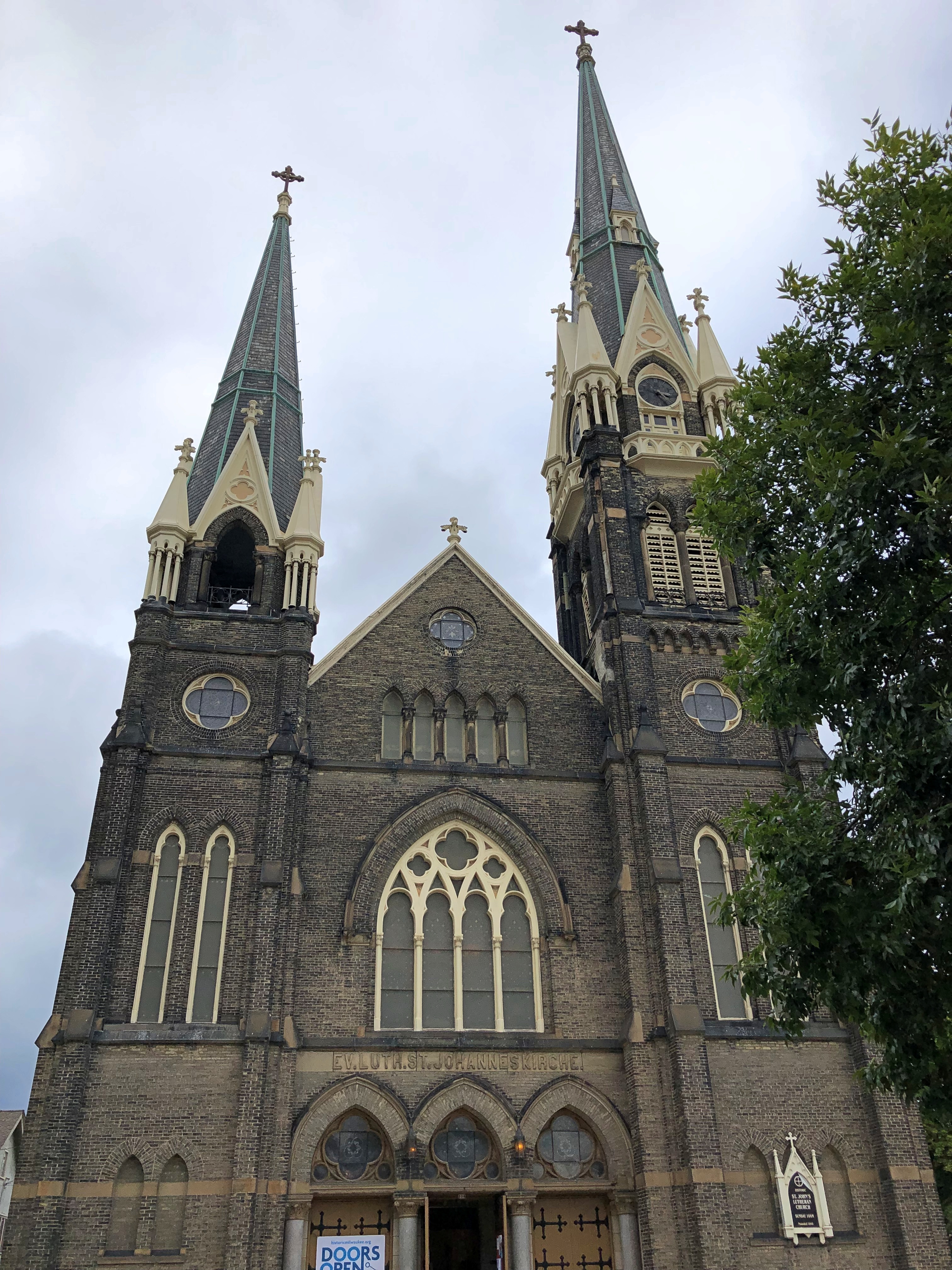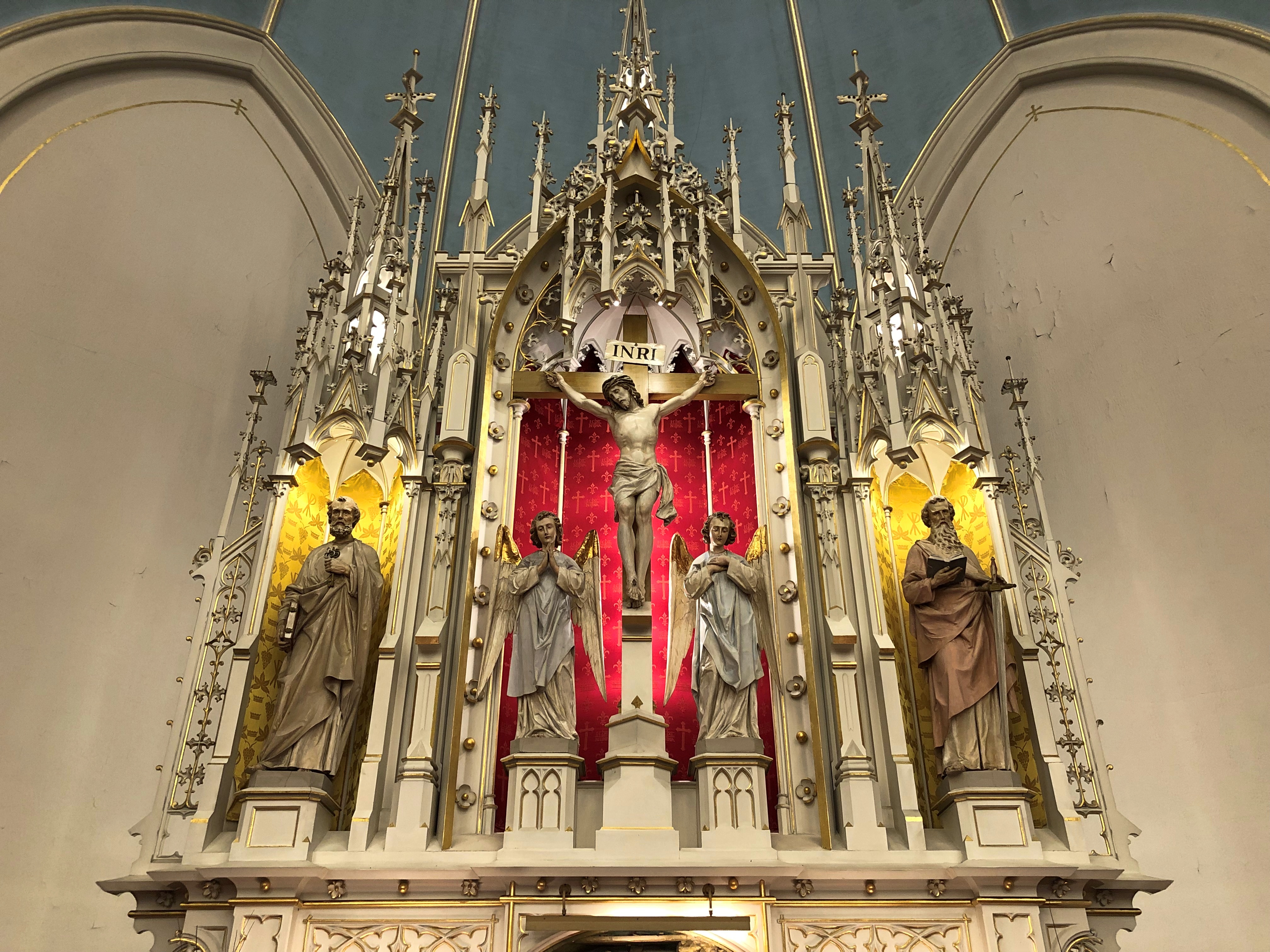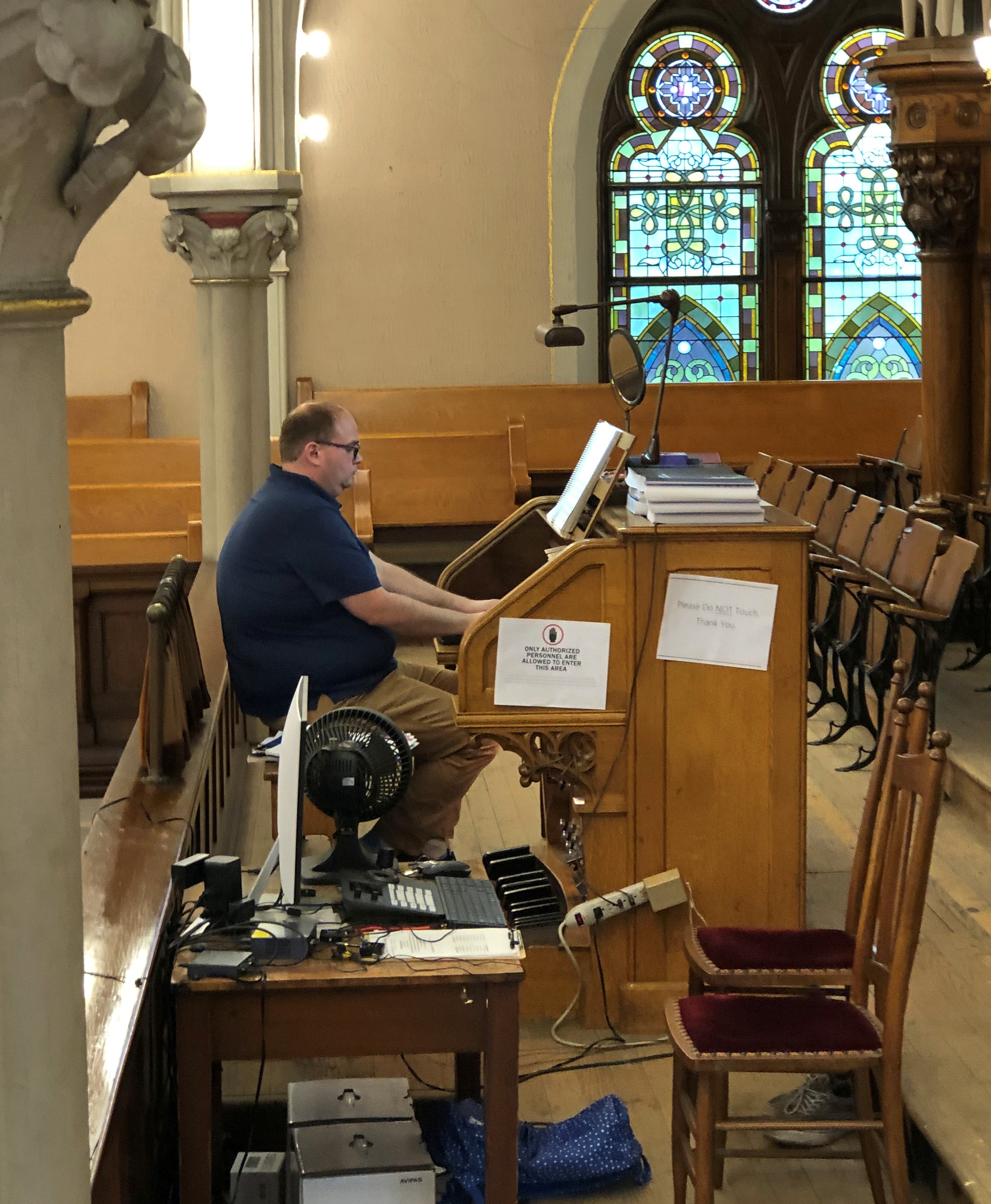What do we think of when we think of Milwaukee, the result of years of history but also modern lore, only a part of which involves anything as consciously planned as advertising? Beer.
Found on a wall at a food court at the former Pabst Brewery complex.
What do I think of? Beer, yes, but also the astonishing number of large churches for such a mid-sized city. Every time I go there now, I see at least one I hadn’t seen before, inside and out.
Such as St. John’s Lutheran Church, which has been a congregation since 1848. A year of mass movement of Germans out of Germany, for sure, though I imagine most of the original congregants were Germans already in Milwaukee. It was the last place in town that we saw as part of this year’s Doors Open event, arriving in the mid-afternoon on Sunday.


The current church building dates from 1890, a design by Herman Schnetzky and Eugene Liebert, two German architects who came to Milwaukee in the late 19th century.
Inside, a curious feature: lights running along the ceiling arches, added in the early 20th century. Over 800 bulbs, I read. I don’t think I’ve ever seen that in a church. Adds more than a touch of luminosity to the place.
The altar, hand-carved in Germany long ago.

Four prophets from the Old Testament: Isaiah, Jeremiah, Ezekiel and Daniel.
Those were the west transept windows. The east windows featured Matthew, Mark, Luke and John.
An organist was practicing on the church’s sizable organ, a 2,500-pipe instrument. He had a nice touch.

The pastor was also around — a young man, maybe no more than 30, and not long out of seminary. Had a nice chat with him about the church and a bit about the various Lutheran groups, which I can never quite keep track of. A synod here and a synod there. He seemed like a personable fellow, which you really ought to be if you go into that line of work.